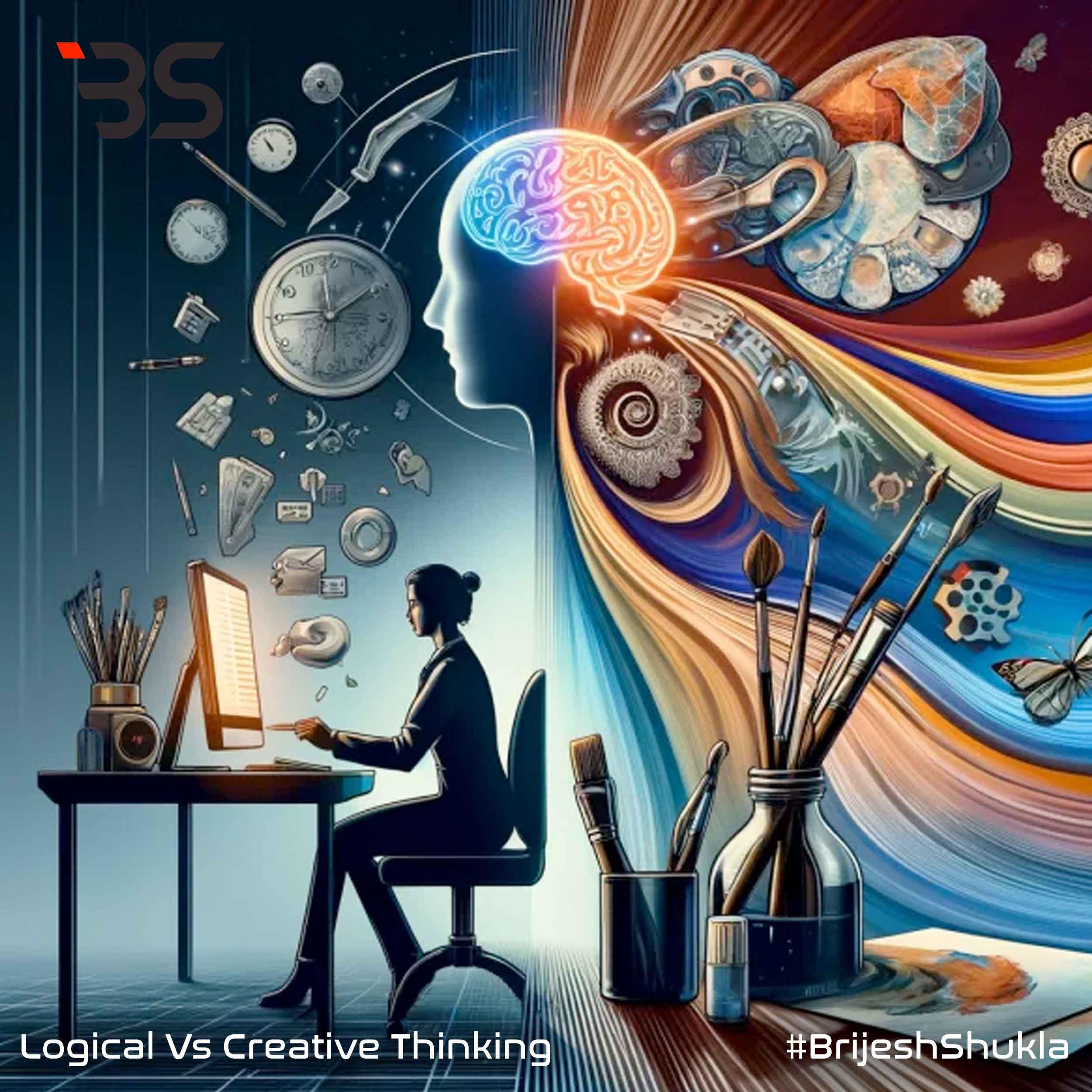Brijesh Shukla
Brijesh Shukla (Mr. Brilliant) AI - Artificial Intelliigence

In a world that values both data-driven decisions and disruptive innovation, two cognitive styles dominate problem-solving: logical thinking and creative thinking. While they seem opposite, the most successful leaders, teams, and businesses harness the power of both.
Main Key explores:
✔ Key differences between logical and creative thinking
✔ When to use each approach
✔ How to develop a balanced mindset
✔ Real-world examples of logic and creativity in action
Analytical, structured, and sequential
Relies on facts, data, and step-by-step reasoning
Focuses on efficiency, accuracy, and minimizing risk
Example: A software engineer debugging code by systematically testing each function.
Divergent, imaginative, and exploratory
Embraces ambiguity, metaphors, and "what if" scenarios
Seeks innovation, originality, and unconventional solutions
Example: A marketer brainstorming a viral ad campaign with unexpected humor.
| Scenario | Logical Thinking Wins | Creative Thinking Wins |
|---|---|---|
| Problem-Solving | Fixing a machine error | Designing a new product |
| Decision-Making | Choosing a cost-effective supplier | Pivoting a failing business model |
| Communication | Writing a technical report | Crafting a brand story |
| Conflict Resolution | Analyzing root causes | Mediating with empathy and compromise |
💡 The magic happens when combined:
Apple’s success blends engineering precision (logic) with sleek design (creativity).
Netflix’s algorithm (logic) recommends shows based on artistic storytelling (creativity).
✔ Practice structured frameworks (e.g., SWOT analysis, pros/cons lists).
✔ Learn coding or data analysis to train your brain in systematic problem-solving.
✔ Play strategy games like chess or Sudoku.
✔ Brainstorm freely—no idea is "bad" in the ideation phase.
✔ Consume art, music, or nature to spark new neural connections.
✔ Use analogies to reframe problems (e.g., "How would a restaurant solve this?").
Only logical? Risk becoming rigid, missing innovative opportunities.
Only creative? Ideas may lack feasibility or execution plans.
Balance is key:
Einstein used creative thought experiments (riding a light beam) to develop logical scientific theories.
Elon Musk combines physics-first principles (logic) with audacious visions (creativity).
The future belongs to those who can toggle between analysis and imagination. Whether you’re a programmer, artist, or CEO, cultivating both skills will:
✅ Solve complex problems more effectively.
✅ Drive innovation while staying grounded.
✅ Communicate ideas persuasively to diverse audiences.
Which do you lean toward—logic, creativity, or both? Share your experiences in the comments!
#CriticalThinking #Creativity #Leadership #ProblemSolving #Innovation #Mindset #PersonalDevelopment
Your email address will not be published. Required fields are marked *